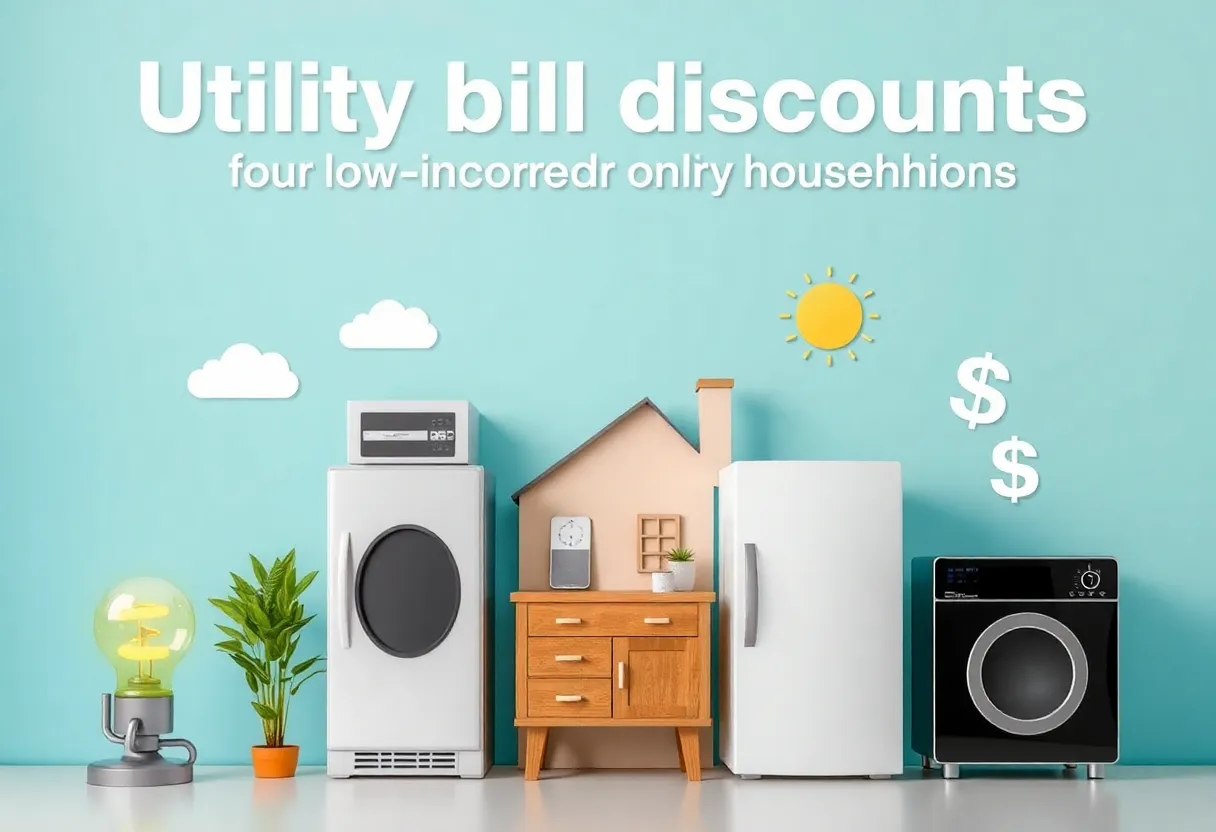News Summary
New York has announced an expansion of its utility bill discount program aimed at aiding low-income households. The Public Service Commission’s revisions may allow an additional 1.6 million households to qualify for assistance, including those earning less than $80,000 annually. While the program aims to reduce monthly bills, concerns persist regarding state funding and potential impacts on utility costs for others. As energy expenses rise, consumer advocates call for sustainable solutions to ensure utility affordability for all.
New York has announced a significant expansion of its utility bill discount program aimed at assisting low-income customers. Under the new initiative, the Public Service Commission (PSC) has unanimously approved revisions that will widen the eligibility criteria, potentially allowing an additional 1.6 million households to receive utility bill discounts. This expansion comes as part of Governor Kathy Hochul‘s directive to address the financial challenges faced by many residents due to rising energy costs.
The eligibility threshold has now been adjusted to include all households earning less than the state median income of approximately $80,000 annually. Previously, the program’s discounts were restricted to households earning 60% or less of the statewide median income. The expanded discount program offers monthly bill reductions of $2, $6, or $13, depending on income levels.
Despite the positive stride towards increased accessibility, experts and critics have expressed reservations regarding the program’s capacity to provide substantial relief. The PSC’s expansion is scrutinized for its lack of adequate state funding, meaning that the costs associated with the new subsidies will ultimately fall on other utility ratepayers instead of being supported through state finances. Critics assert that this funding model could lead to increased energy costs for those already struggling to meet utility payments.
This summer, thousands of utility customers are facing disconnection due to non-payment, highlighting ongoing struggles with utility affordability. Major utility companies such as National Grid have historically managed to enroll only about 40% of eligible low-income customers in existing assistance programs. The anticipated utility rate hikes, which PSC is expected to approve, will likely result in an average increase of $22 per month for combined gas and electric bills for all customers. These increases are intended to generate an extra $1.7 billion in revenue for National Grid over the next three years, providing roughly $210 million to support the expanded bill discounts.
The PSC has projected that the additional costs of the newly expanded Electric Assistance Program will not exceed $145 million statewide, though actual expenses will depend on the number of new participants who enroll in the program. This creates uncertainty regarding the financial implications of the expansion on utility pricing.
Consumer advocates are urging for more comprehensive solutions to tackle the overarching costs of utility services instead of merely providing discounts. They emphasize the necessity for long-term strategies to lower utility expenditures across the board, thus offering more sustainable relief to low- and moderate-income households. Currently, the state’s objective remains to keep utility bills at 6% or less of household income, a target that many residents find increasingly difficult to achieve given the prevailing economic conditions.
The inception of the new program marks a pivotal effort to address the disparities in utility billing and affordability in New York. While the program’s expansion attempts to alleviate financial burdens for a greater number of households, its effectiveness will be tested amidst criticisms regarding its sustainability and adequacy in confronting the escalating costs of energy.
Deeper Dive: News & Info About This Topic
- Syracuse: NY Decides to Raise Money from Utility Customers
- Wikipedia: Utility Billing
- Times Union: Help for Utility Bills Coming to New Yorkers
- Google Search: New York utility bill assistance
- Politico: NY Growing Utility Assistance Program
- Encyclopedia Britannica: Utility Company
- NY Focus: Trump Heating and Cooling Assistance in New York
- Google News: Utility Bills New York

Author: STAFF HERE NEW YORK WRITER
The NEW YORK STAFF WRITER represents the experienced team at HERENewYork.com, your go-to source for actionable local news and information in New York, the five boroughs, and beyond. Specializing in "news you can use," we cover essential topics like product reviews for personal and business needs, local business directories, politics, real estate trends, neighborhood insights, and state news affecting the area—with deep expertise drawn from years of dedicated reporting and strong community input, including local press releases and business updates. We deliver top reporting on high-value events such as New York Fashion Week, Macy's Thanksgiving Day Parade, and Tribeca Film Festival. Our coverage extends to key organizations like the Greater New York Chamber of Commerce and United Way of New York, plus leading businesses in finance and media that power the local economy such as JPMorgan Chase, Goldman Sachs, and Bloomberg. As part of the broader HERE network, including HEREBuffalo.com, we provide comprehensive, credible insights into New York's dynamic landscape.





